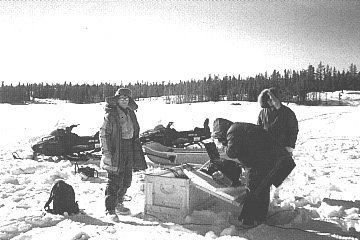

| E-mail Phoenix | Phoenix Home |
|
|
| Phoenix crew members Lucien Patry, Doris LaBrecque and Gary McNeice install V5 System 2000 MTand Long Period MT equipment in an insulated box on lake ice in Canada's Northwest Territories. Snowmobiles were used to access the sites which were several km off the winter road. Manmade noise Is absent here but a strange new noise source turned out to be the Northern Lights (aurora). |  |
|
|